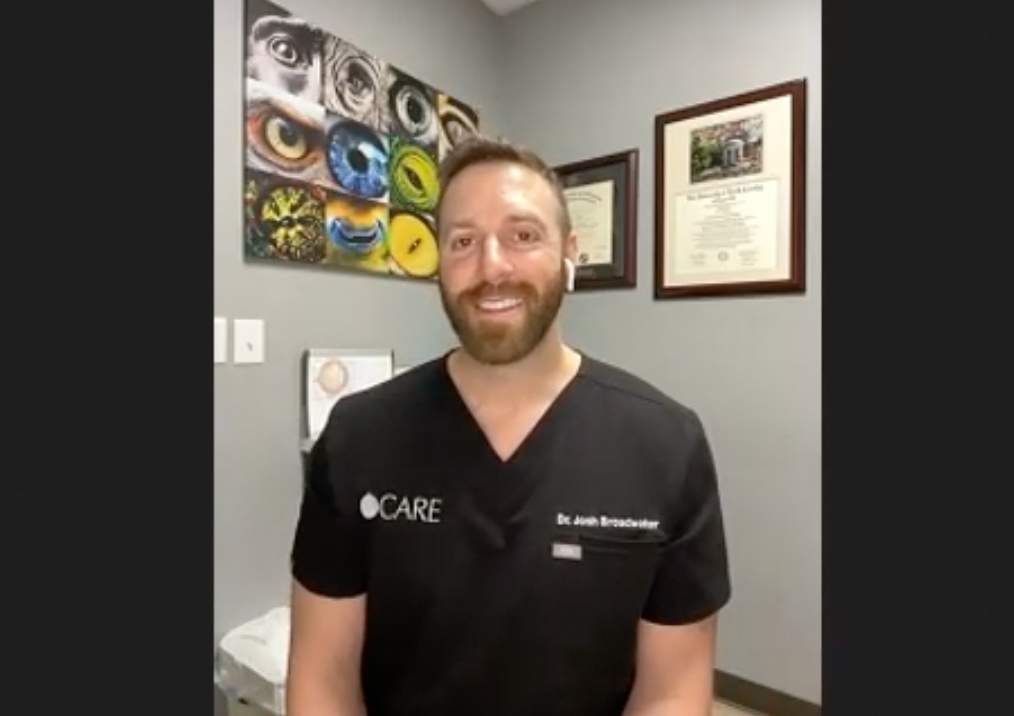AAEP's guidelines for veterinarians focus on medication use at the racetrack
The AAEP Clinical Guidelines for Veterinarians Practicing in a Pari-Mutuel Environment are designed as an evolving document to recommend various veterinary procedures "to put the health and safety of racing horses first."
The American Association of Equine Practitioners (AAEP) Clinical Guidelines for Veterinarians Practicing in a Pari-Mutuel Environment are designed as an evolving document to recommend various veterinary procedures "to put the health and safety of racing horses first."

Protecting the racehorse: The AAEP's guidelines emphasize medication and business practices that ensure each racehorse is at its healthiest.
As racing reform progressed after the incident of Eight Belles' death during the 2008 Kentucky Derby and the congressional hearings regarding horse safety thereafter, "we wanted to champion the horse's point of view," says Scott Palmer, VMD, of the New Jersey Equine Clinic who is the chair of the AAEP Racing Committee. "Someone had to speak for the horse."
In 2009, the AAEP Racing Committee created three white papers with recommendations for protecting the welfare of Quarter Horse, Standardbred and Thoroughbred racehorses. To a large degree, the guidelines evolved from those white papers.
"The context of this document is the white papers," Palmer says. "We are building a foundation upon which we can then move forward to address certain specific issues—some fairly controversial in the racing environment—and do it with a really sound medical philosophy as the core issue.
"For example, we don't say, 'You cannot inject a joint within five days of a race.' Some may say, 'Well, you really should state things like that.' But the truth is, there is no science to document that that practice is harmful for the horse. Wherever we had science, we included it in the document. Where we didn't have science, we then relied upon the clinical experience of the veterinarians on the committee. We tried to make the most appropriate recommendations, based on that experience. Individual veterinarian experience is really valuable. However, anecdotal experience is not as helpful as scientifically controlled studies are to give us information upon which to make decisions.
"In the discussions of what was 'wrong' with racing, there were a lot of people pointing fingers at medication, saying that 'medication was the root of all evil,' and since veterinarians are the ones who control medication, by inference, veterinarians were the 'root of all evil'—guilt by association with medication," Palmer says.
"But the truth of the matter is that the medication of racehorses did not occur in a vacuum, and veterinarians are not the only ones administering medication," says Palmer. "In order to put the medication issue in its proper perspective, we needed to consider, first of all, the societal perception of the animal. People look at horses differently today than they did 100 years ago. We needed to consider the business model of racing and how that business model creates a schedule that dictates the way people medicate horses to get them ready for these races. Third, the owner-trainer relationship drives this issue quite a bit, in terms of the owner-trainer philosophy on medicating racehorses. Finally, the veterinary business model itself influences the medication of racehorses."
Throughout the process, the AAEP Racing Committee made recommendations about many aspects of racing, such as track maintenance, claiming protocols and scheduling. "We recognized right from the very beginning that the response we were going to get from the industry was, 'Well wait a minute here, how about cleaning your own house? What are you doing about veterinarians practicing at the racetrack in terms of the use of medication?'" says Palmer. "So the committee wrote the clinical guidelines to address the way that medication is administered to horses at the racetrack or the pari-mutuel environment." (Pari-mutuel environment includes horses in training at training centers in addition to those at the racetrack.)
The issues
The core focus of this document is that the medication of racehorses should be based on a clinical diagnosis rather than the entry date. The AAEP thinks that healthcare decisions based on race entry dates alone are not in the best interest of the horse.
"Some people might say, 'Well, of course, that's obvious,'" says Palmer. "But the truth of the matter is that despite how obvious that is, the racing schedule does impact the way these horses are managed. We're not naïve to that fact. If these horses were not racing, a lot of this medication wouldn't be needed."
Some of the issues addressed by the document include:
1. No medication, with the exception of furosemide, should be given to a horse on race day.
2. Any medication given prior to race day should be in accordance with the Racing Medication and Testing Consortium (RMTC) guidelines (rmtcnet.com).
3. A 10-day withdrawal period is necessary after shockwave treatment.
4. Hyperbaric oxygen therapy should not be performed after the entry date.
5. Caution should be used in the selection, timing and frequency of intra-articular corticosteroids in high-motion joints.
6. Intra-articular use of local anesthetics is indicated for diagnostic procedures only.
7. Under no circumstances should local anesthetics, antinociceptive agents or neurotoxic agents be used intra-articularly or periarticularly prior to competition.
8. Under no circumstances should perineural treatments be used to desensitize a portion of the body prior to competition.
9. Integrative therapies should be based on valid medical diagnoses.
10. All procedures performed should be documented in a medical record.
11. Practitioners should not reuse needles, syringes or any equipment that might be contaminated with blood or other body fluids.
12. All communication with owners and trainers should be transparent.
13. Practice vehicles should only contain medications that are legal for use under FDA guidelines, with appropriate compliance to labeling, refrigeration instructions and expiration dates.
14. The veterinarian should limit the use of compounded drugs to unique needs in specific patients and for those uses in which a physiological response can be monitored, or those for which no other method or route of delivery is practical.
Another important concept in the document is the veterinary business model. "The fact is that veterinarians for many years at the racetrack have been charging for medications and giving away their professional services," Palmer says. "We consider this to be an upside-down business model. Veterinarians need to appropriately bill for their professional services and their education and charge less for medications. They need to shift that emphasis. We think that's really important."
"I appreciate the document being laid out in a defined, concise manner. It's the result of my peers, using their years of experience, to put together clear, thoughtful guidelines," says Bernard Dowd, DVM, racetrack practitioner, founding partner at North Atlantic Equine Assoc., Monmouth Park, N.J. "I think the AAEP guidelines only help strengthen the racing industry."
Use of guidelines
A trainer might be preparing a horse for a particular race, perhaps the Kentucky Derby. There are races leading up to that race that a trainer has to condition the horse for, and the trainer must maintain that condition. The art is training the horse and keeping it well enough to be fit and competitive—preventing the horse from getting hurt or worn out by overtraining.
"There is an art to training horses, and, in part, that art includes managing conditions that develop, whether it's arthritis, inflammation, a sore or sprained ankle or whatever it might be that comes along the way—just like you would with any other trained athlete," Palmer says. "The challenge is to do things properly in a way that the horse's benefit is really uppermost in everybody's mind. Our goal is to make that affirmation. We did that throughout the document."
"It doesn't change our practice philosophy or routine in any way," Dowd says. "The document references that most practices revolve around the entry date of the horse because so much of our racing industry revolves around withdrawals. But, fortunately, because of where we are in New Jersey (from Monmouth Park Racetrack to Belmont), most of our clientele is educated and experienced. Many of our horses have a high value; therefore, medicating strictly to run is not a routine part of our practice. This is what the document speaks to—the welfare of the horse and keeping the horse healthy. Fortunately, we are working with competent trainers and owners with good intentions and horses that are healthy and productive. There are always exceptions, and it's helpful that we have guidelines to keep everybody in check.
"The AAEP clinical guidelines actually make practicing veterinary medicine easier. They are clearly spelled out so that you can reference them as needed," Dowd says. "Clients will be able to understand limitations we set as practitioners regarding various practices. We are confined to what we can do and what we cannot."
Comprehensive, but evolving document
"The AAEP has had written policy statements on horse medication for many years," says Palmer. "But this is the first time we've ever tried to write a comprehensive document that really tries to cover all the bases at the racetrack—everything from how you manage the materials in your truck and how you bill for your services, to efforts that focus on the health and welfare issues. The purpose is not to ignore the entry date, but not to make that the primary issue.
"This document is designed to provide support for people who are making good decisions and practicing good medicine at racetracks," Palmer says. "We really wanted to emphasize throughout the document that whether it's hyperbaric therapy, corticosteroid injection, flunixin or whatever you're treating the horse with, it is important that those treatments be based on a medical diagnosis, which determines a treatment plan, followed by an appropriate period of time to evaluate the effect of that treatment plan before you race the horse. These are the fundamental concepts that we all learned in veterinary school."
An area that still needs to be addressed to improve the consistency of veterinary care on racetracks is the issue of medication withdrawal times. "We're really looking forward to uniform withdrawal times for medication," Dowd says. "On the east coast, veterinarians cross several racing jurisdictions everyday. Horses are going to Maryland, Delaware, Pennsylvania and New York. To have uniformity would be outstanding. It would be more economical for our industry, too. The individual racing commissions spend a fortune to test in state, when they should just have a big, regional pool. All states could share resources, potentially cutting the overhead costs. Ultimately, this would increase testing proficiency and accuracy; it would be advantageous to all.
"This document, in some sense, is always going to be incomplete and evolving because we didn't put every single medication in here," says Palmer. "One of the things we're looking to include as an upgrade would be recommendations about NSAIDs, clenbuterol, omeprazole, etc.—therapeutic medications that some people feel may be overly used or abused at the racetrack, particularly if their use is not based on a scientific diagnosis, but simply to try to gain a competitive advantage. We plan to address a number of these issues as we proceed."
However, Palmer thinks AAEP's guidelines are a comprehensive document. "We tried to address all of the major areas that we felt were appropriate," says Palmer. "We also want to emphasize that this is a living, breathing document. It will evolve as more scientific information becomes available and we can make more specific recommendations in any particular area."
The guidelines can be downloaded at www.aaep.org/images/files/AAEP%20Clinical%20Guidelines%20Pari-Mutuel%20Environment.pdf.
Kane is a researcher and consultant in animal nutrition. He is an author and editor on nutrition, physiology and veterinary medicine with a background in horses, pets and livestock. He is based in Seattle.
Podcast CE: A Surgeon’s Perspective on Current Trends for the Management of Osteoarthritis, Part 1
May 17th 2024David L. Dycus, DVM, MS, CCRP, DACVS joins Adam Christman, DVM, MBA, to discuss a proactive approach to the diagnosis of osteoarthritis and the best tools for general practice.
Listen











